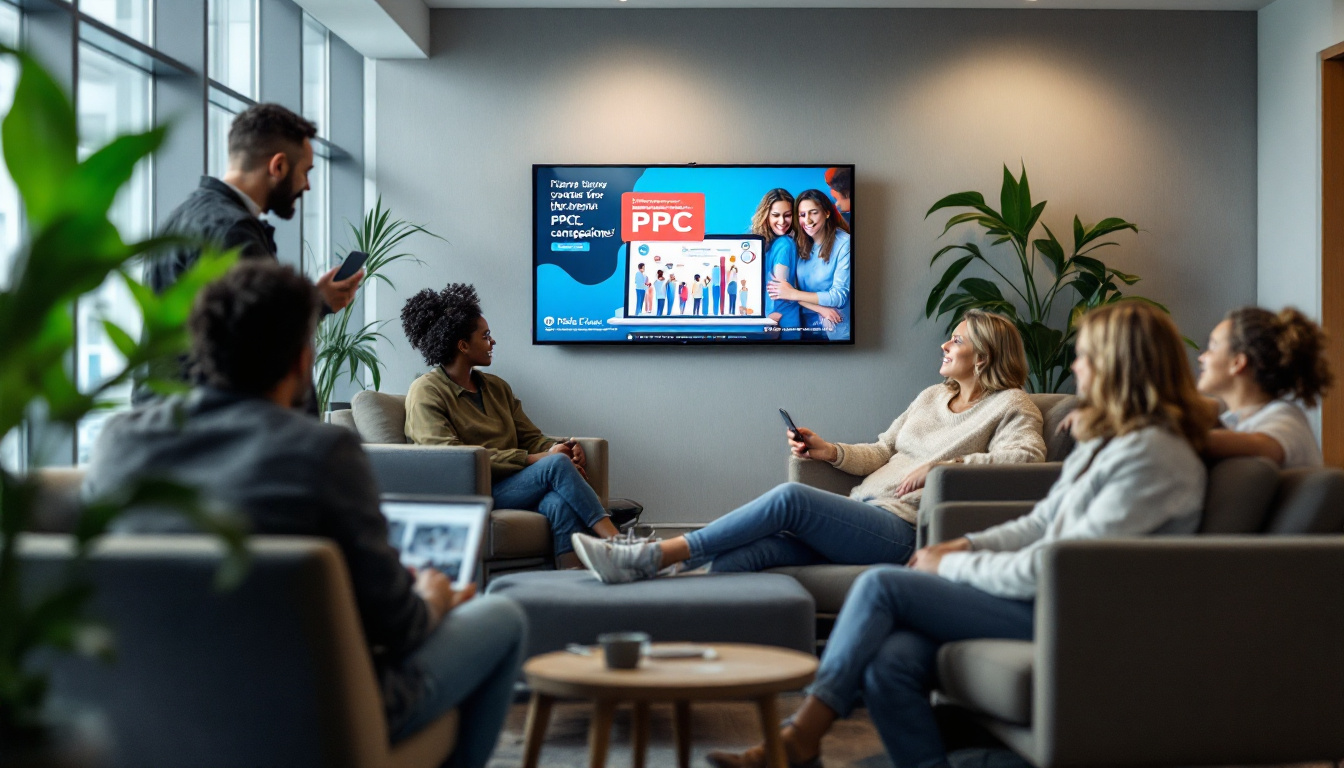10 Quick PPC Tips for Small Businesses in Chicago, IL

Pay-per-click (PPC) advertising is an essential tool for small businesses looking to thrive in competitive markets like Chicago, IL. With the right strategies in place, you can maximize your return on investment and effectively reach your target audience. Below are ten quick tips to help you succeed in your PPC campaigns.
Tips for crafting compelling ad copy
Ad copy serves as the first impression of your business to potential customers. Crafting compelling ad copy is crucial for capturing attention and prompting action. Here are some strategies to enhance your messaging:

- Use Strong Call-to-Actions: Directing your audience with powerful phrases such as "Shop Now," "Get a Free Quote," or "Sign Up Today" can significantly increase click-through rates.
- Highlight Unique Selling Propositions: Clearly state what sets your business apart from competitors. Whether it's exceptional customer service, unbeatable prices, or exclusive offers, make sure it shines in your ad copy.
- Use Keywords Wisely: Integrate relevant keywords naturally into your ad copy. This improves relevance to search queries and boosts your Quality Score with platforms like Google Ads.
- Be Clear and Concise: Avoid jargon and keep your messaging straightforward. Clear ad copy resonates better with users and encourages them to take the next step.
Effective ad copy not only attracts clicks but also communicates your brand's voice and value proposition succinctly. It is essential to understand that the digital landscape is crowded, and your message must cut through the noise. Testing different versions of your ad copy can provide valuable insights into what resonates best with your audience, allowing you to refine your approach continuously.
Utilizing Emotional Triggers
Incorporating emotional triggers can elevate your ad copy. Whether it's joy, fear of missing out (FOMO), or belonging, relating to your audience on an emotional level can prompt a stronger response. Consider your target demographic and use language that resonates with their feelings and desires. For instance, if you are marketing a travel service, evoke the excitement of adventure and the joy of exploring new cultures, painting a vivid picture that potential customers can envision themselves in.
Additionally, storytelling can be a powerful tool in your ad copy arsenal. By sharing relatable anecdotes or testimonials, you can create a connection with your audience that goes beyond mere transactions. When people see themselves in the stories you tell, they are more likely to engage with your brand. This approach not only fosters trust but also encourages sharing, as customers are more inclined to spread the word about brands that resonate with their personal experiences.
How to use geo-targeting effectively
Geo-targeting allows businesses to focus their advertising efforts on specific locations, which is especially beneficial for local businesses in Chicago. This feature enhances relevance and increases the chances of conversions. Here’s how to use geo-targeting effectively:
- Identify Key Locations: Analyze your customer data to determine high-performing areas. Focus your ads on these locations to optimize your spend.
- Customize Ad Messaging: Tailoring your copy based on the target location can resonate better with local audiences. Mention city-specific events, landmarks, or issues that relate to your services.
- Use Location Extensions: Take advantage of location extensions in your PPC campaigns, as they display your business address and phone number, making it easier for potential customers to find you.
Geo-targeting not only saves your advertising budget but also fosters stronger connections with your community by showing you understand their needs and preferences. By leveraging local dialects and cultural references, your ads can feel more relatable and engaging, which can significantly enhance customer loyalty and brand recognition. For instance, if your business is a restaurant, mentioning local favorites or seasonal dishes can create a sense of familiarity and excitement among potential diners.
Monitoring Performance by Area
Regularly monitor the performance of your ads in different geographical areas. Utilizing analytics tools to gauge which locations yield the highest conversions can inform future targeting strategies and ad placements. Adjust your campaigns accordingly to focus on high-performing regions. Additionally, consider conducting A/B testing with different ad variations in various locations to see which messages resonate best. This data-driven approach allows you to refine your strategy continuously and stay ahead of competitors who may not be utilizing geo-targeting to its full potential.
Furthermore, integrating geo-targeting with social media platforms can amplify your reach even more. Platforms like Facebook and Instagram offer advanced targeting options that allow you to reach users based on their current location or the places they frequently visit. By combining this social media targeting with your existing geo-targeting efforts, you can create a cohesive marketing strategy that maximizes visibility and engagement, ensuring that your message reaches the right audience at the right time.
Best practices for budget allocation
Budget allocation is vital to the success of your PPC campaigns. As a small business, maximizing each dollar spent is imperative. Here are some best practices for budgeting:
- Set Clear Objectives: Establish what you want to achieve with your campaigns. Whether it’s increasing brand awareness or driving sales, clear objectives guide your budgeting decisions.
- Allocate Budgets by Performance: Regularly review your campaigns' performances and allocate more budget towards high-performing ads while reducing spend on underperforming ones.
- Use Bid Strategies Wisely: Experiment with different bidding strategies such as manual, enhanced cost-per-click (ECPC), or target CPA. Find what works best for your goals and budgets.
By adopting strategic budgeting practices, you can bolster your PPC efforts without overspending. Additionally, consider leveraging seasonal trends and market fluctuations to inform your budget allocation. For instance, if your business experiences a spike in sales during the holiday season, increasing your budget during that period can capitalize on heightened consumer interest and drive more conversions. Understanding your audience's behavior can also provide insights into when to allocate more resources for maximum impact.
Review and Adjust Regularly
Your budget should remain flexible. Regularly reviewing performance and adjusting your budget allocation to adapt to market trends can maximize your ROI. The dynamic nature of PPC requires staying vigilant and responsive. Implementing a routine schedule for performance reviews—such as weekly or bi-weekly—can help you stay on top of any necessary adjustments. During these reviews, analyze key metrics such as click-through rates (CTR), conversion rates, and cost per acquisition (CPA) to ensure your campaigns are aligned with your overall business objectives.
Why testing is crucial in PPC campaigns
Testing is a cornerstone of successful PPC campaigns. Without continuous testing and optimization, it’s challenging to know what works best for your audience. Here are key components to consider:
- A/B Testing Ad Copy: Create variations of your ad copy to see which performs better. Test different headlines, descriptions, or calls-to-action to identify what captures your audience's attention.
- Experiment with Landing Pages: Different landing pages can influence conversion rates. Test various designs, messages, and layouts to determine the most effective one to accompany your ads.
- Monitor Keywords Performance: Regularly assess which keywords drive results. Adjust your keyword strategy based on performance data to sustain effectiveness.
Implementing a robust testing strategy allows you to make data-driven decisions, ensuring your PPC campaigns continually improve. The insights gained from these tests can lead to a deeper understanding of your audience's preferences and behaviors, enabling you to tailor your campaigns more effectively. For instance, discovering that a particular call-to-action resonates more with your target demographic can significantly enhance your click-through rates and overall ROI.
Iterative Approach to Optimization
Accept that PPC is an ongoing process. An iterative approach where you continuously test, review, and adjust your strategies will lead to increased success over time. Stay curious and committed to improving your campaigns. This iterative mindset not only fosters a culture of experimentation but also encourages you to stay ahead of industry trends and competitor strategies. By regularly analyzing data and adapting your tactics, you can uncover new opportunities for growth and ensure that your campaigns remain relevant in a rapidly changing digital landscape.
Moreover, leveraging advanced analytics tools can provide deeper insights into user behavior and campaign performance. These tools can help you track user interactions beyond the initial click, allowing for a more comprehensive understanding of the customer journey. By correlating ad performance with post-click behavior, you can make informed decisions that enhance both your PPC strategy and overall marketing efforts. Such a holistic approach ensures that every element of your campaign is optimized for maximum impact, ultimately driving better results and higher conversions.
How to use extensions to enhance ad visibility
Ad extensions enrich your ads with additional information, making them more appealing and informative. Here are effective ways to leverage ad extensions:

- Sitelink Extensions: Use sitelink extensions to direct users to specific pages of your website, providing more paths for engagement.
- Call Extensions: Including a phone number directly in your ad allows users to call your business with just one click. It’s particularly helpful for service-oriented businesses.
- Location Extensions: As previously mentioned, these help display your physical address and increase local foot traffic.
Utilizing ad extensions positively impacts your ad rank and improves click-through rates by providing more value to users and making it easier for them to engage with your brand.
Measuring the Impact of Extensions
After implementing extensions, track their performance to understand their impact on your campaigns. By measuring the increase in clicks and conversions attributable to your extensions, you can refine your use of them further.
By following these ten quick PPC tips tailored to small businesses in Chicago, you can enhance your online presence and achieve your advertising goals. The competitive landscape of PPC demands a commitment to learning and adapting, so be ready to engage in ongoing optimization and testing.

As a Google Ads expert, I bring proven expertise in optimizing advertising campaigns to maximize ROI.
I specialize in sharing advanced strategies and targeted tips to refine Google Ads campaign management.
Committed to staying ahead of the latest trends and algorithms, I ensure that my clients receive cutting-edge solutions.
My passion for digital marketing and my ability to interpret data for strategic insights enable me to offer high-level consulting that aims to exceed expectations.























